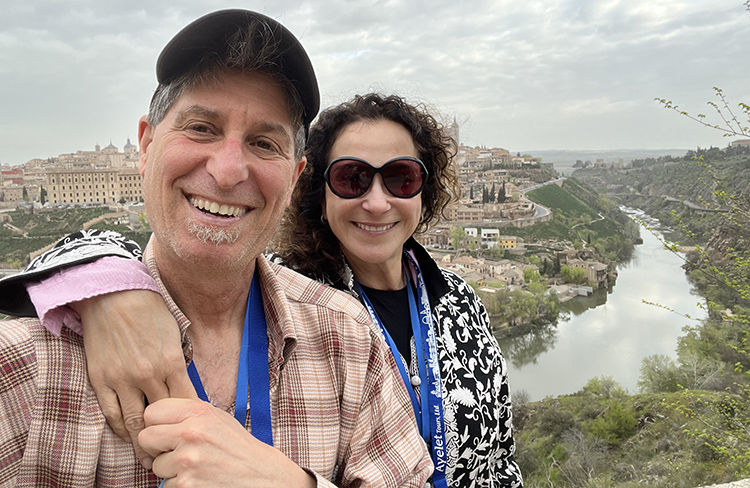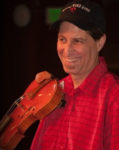
By Yale Strom

SAN DIEGO — Many people know me as an artist and purveyor of Yiddish culture, particularly of klezmer music. I have certainly done a lot of ethnographic research throughout Central and Eastern Europe among the Jewish and Romani communities, beginning with my ethnographic trip behind the Iron Curtain in 1981. But I also have had a strong interest in Sephardic culture, especially the folk music.
After the expulsion of the Jews from Spain in 1492 and Portugal in 1495, the two largest migrations were to North Africa and to the Ottoman Empire. It was when I first traveled to Romania and Bulgaria (initially researching klezmer) that I met Jews who traced their heritage back to the Iberian Peninsula. Some of these Jews sang songs in Ladino and others played Sephardic music. Some of the music used the mode we call Hedjaz or Freygish. To the layman, this means the music sounded Arabic or Middle Eastern, scales from our origins in that region of the world. I was surprised but after doing my research I understood why.
After Europe defeated the Ottoman Turks in 1699, the Ottomans ceded most of Hungary, Slavonia and Transylvania to the Habsburg Empire and Podolia to Poland. Constantinople (Istanbul) was the nexus of several major trade routes – going north to Odessa via the Black Sea; west to Vienna via the Danube River through Galati, Belgrade and Budapest; and south to Jerusalem. For the Jewish musicians living in Constantinople between the mid-nineteenth century and the beginning of World War I, these trade routes gave them easy access to a variety of places, and traveling these routes enabled them to pick up new tunes (particularly from Romani musicians traveling the same routes) and teach their own to others. Many of these melodies were originally Turkish in origin.
One of the major sources that created the klezmer’s core dance repertoire was Greco-Turkish dance music. The Middle Eastern modes were already familiar to the klezmer (from synagogue prayer), as were the improvisational, melismatic singing and playing exhibited in many of the tunes. But by the beginning of the nineteenth century, the repertoire of the Romani musicians was involved. The repository for this mixing, exchanging and borrowing of Greco-Turkish tunes was the region of Moldavia/Bessarabia. Dance tunes such as the hong, sirba, zhok, and bulgarish and display tunes such as the Terkishe freylekhs, Terkishe gebet, volekhl, doyne and taksim now formed the core of the Romanian-Turkish klezmer sound.
This Greco-Turkish influence became very apparent to me when I was in Chisinau (Kishinev), Moldova and my Romani friend Nikolai Radu began to play a melody on the piano he learned from Jewish musicians while playing at weddings before World War Two in Bessarabia. He called the melody a ketsev tants (Yiddish for butcher’s dance, from the Hebrew word for butcher) that melodically and rhythmically sounded like the Greek folk dance called hasapiko. It originated in Constantinople during the Middle Ages when Greek butchers danced with swords sometime before going into battle.
Even Spain’s most famous cultural expression, flamenco, was influenced by the Sephardic Jews and the Middle Eastern modes in which they sang and played. Jews from the Middle East had been in Spain since anywhere from the first to third centuries, while the Moors only came in the year 711.
In 1992, after traveling throughout the Balkans, Spain and Portugal, I wrote a book called The Expulsion of the Jews: 500 Years of Exodus. The book contains photos and oral histories. Just a few years later I met my wife and colleague Elizabeth Schwartz, whose paternal Romanian side of the family came to Romania via their expulsion from Spain in 1432. (They had originally spelled their name Sfarti – meaning Sephardi).
So my interest in Sephardic culture goes back several decades and I look forward to exploring it with you this November when Elizabeth and I lead an Ayelet tour to Spain.
Ayelet Tours are known for their comfort and the excellence of their guides. This tour will include Jewish and Spanish sites, history, art, cuisine and music (including a flamenco concert in one of Sevilla’s greatest tablaos). In addition to the local scholars, I will provide some lectures on the history of Sephardic music as well as Spain and the Holocaust. We will also play concerts in Barcelona and in Majorca where we will be joined by local professional musicians. The concerts will include Sephardic, klezmer and Romani songs.
Here’s a link for more information. I hope you join us.
*
Yale Strom is an ethnomusicologist well known for performing klezmer music in the Hot Pstromi band, which includes his vocalist wife Elizabeth Schwartz. He has served as a scholar in residence at San Diego State University, and is an author and documentary film maker.
I respect your musical talent which we in San Diego are able to enjoy but we as Jews need to financially and emotionally support Israel and not other countries. Israel needs to see and feel the citizens of the US support. Spain is the most antisemitic country in Europe. Why give such a country our support and funds at this time? If Jews really care about our history and ancestry we need to support our Jewish homeland and their residents first. This should be our priority to support the existence of Israel and also not support antisemitism.